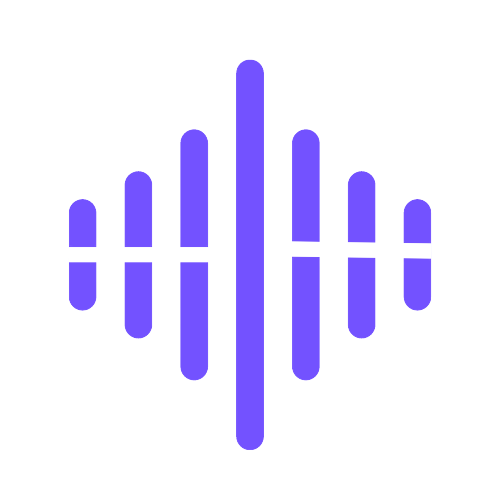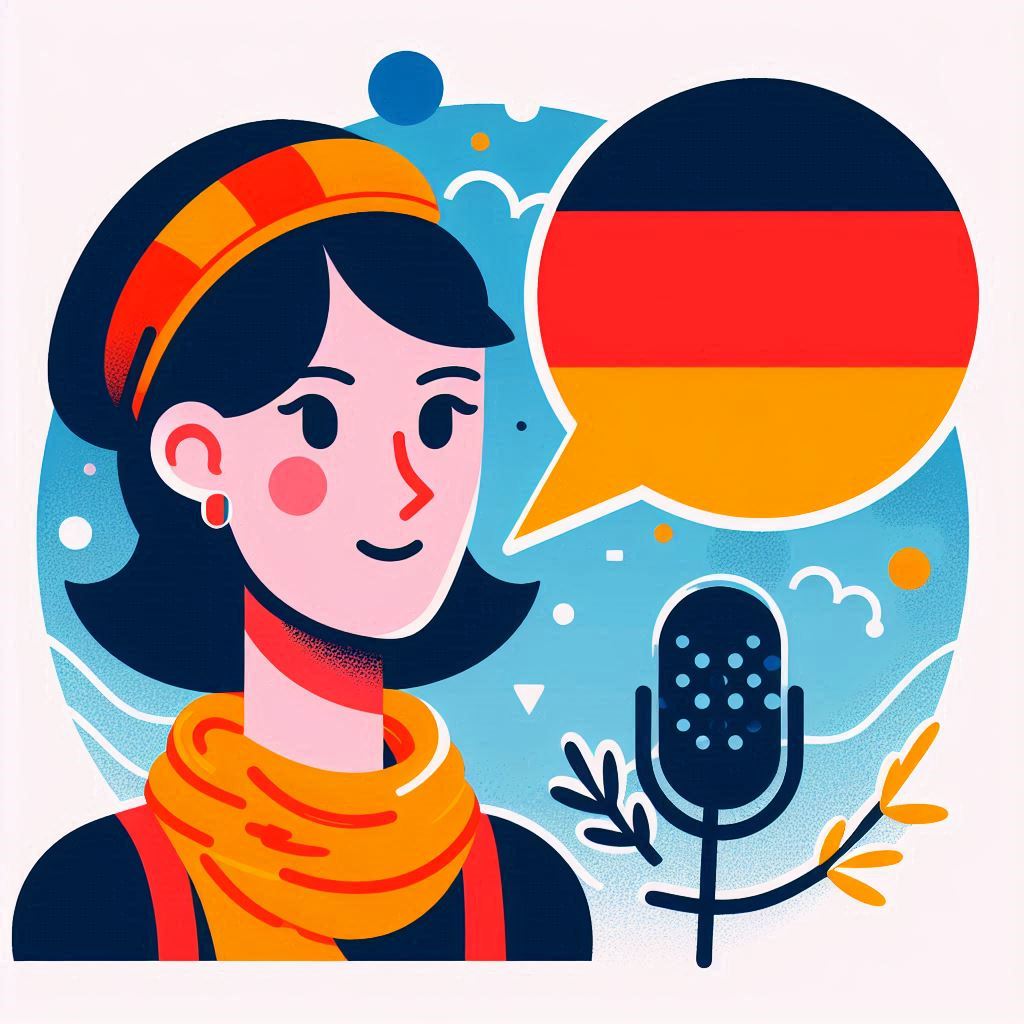
Voxify
German Text To Speech
Effortlessly set up and deliver immersive audio experiences, Voxify has over 450 voices available to fit any of your needs, and you can control everything about the narration - pitch, speed and emotion. Great for content creators, podcasters and educators who are looking to up their voiceover quality.

Louisa
Germany
Optimizing German Text to Speech for Clear and Natural Output
Have you ever wondered why some German text-to-speech voices sound robotic while others feel remarkably human-like? The quality difference stems from the system’s optimization for the German language’s unique characteristics.
Text-to-speech German technology has evolved substantially. It has moved beyond simple voice synthesis to sophisticated AI-powered solutions. Modern German TTS systems employ neural networks and linguistic modeling that create natural-sounding German voices.
Conrad
Germany
Ingrid
Austria
Jan
Switzerland
Ready to dive in?
Start creating with realistic voices.
German AI voice generation serves multiple purposes—from e-learning content to accessibility tools and professional voiceovers. Proper optimization will give your audio output the clarity and authenticity it needs.
Let’s explore how to optimize your German text-to-speech system effectively. You’ll discover everything about speech synthesis components and learn pronunciation optimization techniques. The technical configurations and quality control methods we’ll discuss help create natural-sounding German audio content.

Understanding German Speech Synthesis Fundamentals
Building high-quality German text-to-speech output requires a deep understanding of modern TTS systems' fundamental building blocks. Let's look at the components and architecture that create natural-sounding German speech.
Core Components of German TTS Systems
Modern German TTS systems work with a modular architecture that processes text through several specialized stages. Here are the main components:
- Text analysis and tokenization that breaks down input into processable units
- Phonetic transcription using the SAMPA phonetic alphabet for German [1]
- Prosody modeling with GToBI (German Tones and Break Indices) for natural intonation [1]
- Neural vocoders for final audio generation
We at Voxify have optimized these components specifically for German language characteristics. This ensures exceptional audio quality in every use case.
Neural Network Architecture for German Speech
Modern German text-to-speech systems use advanced neural networks to create natural-sounding output. These systems combine sequence-to-sequence models with attention mechanisms to convert text into acoustic features [2]. The architecture has achieved a Word Error Rate as low as 14.21% for German speech synthesis [2], showing remarkable pronunciation accuracy.
Effect of Linguistic Features on Output Quality
German TTS output quality depends on the system's handling of specific linguistic features. Content words need accent emphasis, while function words usually don’t [3]. Word position within sentences shapes prosody, especially for finite verbs in second position [3].
Voice quality plays a vital role in how natural the speech sounds. Studies show that German and Chinese listeners preferred breathy voices in TTS output [4]. German listeners paid more attention to overall voice quality than pitch movements [4]. This knowledge helps systems like Voxify deliver natural-sounding German speech consistently.

Optimizing Pronunciation and Prosody
Natural-sounding German speech depends on getting pronunciation and prosody just right. Let's look at ways to optimize these elements in your text-to-speech German system.
Handling German Phonetic Complexities
Your German text-to-speech system must address specific phonetic challenges unique to the language. To cite an instance, word-final devoicing is a vital feature that turns voiced consonants into unvoiced ones at word endings. Austrian German varieties consistently turn voiced sibilants (/z/ or /Z/) into unvoiced ones (/s/ and /S/) [3].
Fine-tuning Stress and Intonation Patterns
The naturalness of your German AI voice output depends heavily on proper stress placement. These patterns need optimization:
- Primary accent emphasis goes to content words while function words stay unstressed [3]
- Nouns or argument heads get most accents, and verbs receive fewer accent marks [3]
- Finite verbs in second position rarely get accent unless they emphasize sentence truth value [3]
Managing Regional Accent Variations
German TTS systems need to account for regional differences. Our team at Voxify has found that Swiss German creates unique challenges because it lacks standard orthography and shows much regional variation in written forms [5].
Austrian German needs specific changes:
- Post-vocalic /r/ vocalizes fully or partially to a-schwa
- Word endings with orthographical 'ig' sound like /Ik/ instead of the German standard /IC/ [6]
These optimizations in your text-to-speech German system will lead to more authentic output. Note that prosodic phrasing affects the overall impression of language prosody, and phrase boundaries typically show up through lengthened final syllables [7].

Technical Configuration for Quality Enhancement
Professional-quality output in German text-to-speech systems depends on proper technical parameter configuration. Our team at Voxify has determined the best settings through extensive testing and research.
Sample Rate and Bit Depth Optimization
Audio quality largely depends on your sample rate choice. German speech synthesis works best with a 22.05 kHz sampling rate for high-quality output [8]. Most systems can operate at 16 kHz, but higher rates deliver superior clarity [9].
The optimal audio quality needs these configuration parameters:
- Normalize audio output to -24dB for consistent volume [10]
- Use mono channel configuration to reduce processing overhead [11]
- Maintain 16-bit precision for clear voice reproduction [12]
Buffer Size and Latency Management
Quality and responsiveness depend on proper buffer size management. Small buffers decrease latency but require more CPU power. Our system’s German speech synthesis achieves speeds up to 50.29x faster than real-time on GPU and 2.55x on CPU [8].
Voice Model Selection and Training
Training data’s quality and quantity determine your voice model’s excellence. Professional German speech synthesis requires these dataset specifications:
- Minimum 20 hours of high-quality recordings per speaker [9]
- Audio recordings at 44.1 kHz for maximum flexibility [9]
- Normalized text with proper punctuation and capitalization [9]
Voxify’s German text-to-speech models use carefully annotated speech corpora with over 20 hours of professional recordings from both male and female voice talents [8]. This detailed approach delivers natural-sounding output with a mean opinion score of 3.84 using StyleMelGAN technology [8].
The system’s ability to handle German phonetic complexities and produce natural-sounding speech depends on these technical parameters’ proper configuration. You will achieve optimal results in your German AI voice applications by following these specifications.

Advanced Quality Control Methods
Quality control plays a vital role in creating outstanding German text-to-speech output. Voxify uses detailed quality assessment methods that ensure superior audio standards.
Automated Quality Assessment Metrics
German TTS quality evaluation should include several automated metrics. Our system uses Mean Opinion Score (MOS) testing and achieves scores of 3.84 for synthetic speech compared to 4.23 for professional recordings [8]. We suggest these tools for a comprehensive assessment:
- Character-level metrics (chrF, charBLEU) correlate better with human judgments [1]
- Mel-Cepstral Distortion (MCD) measurements to assess voice quality
- Automated speech recognition (ASR) validation checks for accuracy
Human Evaluation Frameworks
Native speaker evaluations help create natural-sounding German speech in three core areas [1]:
- Adequacy: Ensuring accurate meaning transfer
- Fluency: Evaluating speech flow and coherence
- Naturalness: Assessing voice quality and pronunciation precision
Your evaluation team should include at least three native German speakers who rate samples on a 5-point Likert scale [1]. Voxify conducts P.808 Absolute Category Rating tests with carefully selected evaluators [8].
Continuous Improvement Strategies
German text-to-speech quality improves through systematic refinement. Character-level metrics handle regional differences better, so dialectal variations need special attention [1]. ASR transcription quality needs careful monitoring because large language models may auto-correct synthesis errors, masking areas that need improvement [1].
Voxify’s voice models receive regular updates based on user feedback in our optimization process. This ensures your German AI voice output consistently meets professional quality standards.

Conclusion
German text-to-speech technology requires optimization across several areas. This guide provides essential knowledge on speech synthesis fundamentals, pronunciation enhancements, and technical configurations needed for professional-quality German voice output.
The success of your German TTS implementation depends on handling language-specific features correctly, including word-final devoicing, regional variations, and stress patterns. Using optimal technical settings like a 22.05 kHz sampling rate and optimized buffer sizes ensures clear audio while meeting performance requirements.
Quality control is essential through a combination of automated metrics and human evaluations. Achieving Mean Opinion Scores (MOS) of 3.84 demonstrates the level of quality attainable through these optimizations.
Voxify’s German text-to-speech platform implements these optimization principles, providing natural-sounding voices with full quality controls and technical excellence.Start now to transform your content into engaging German audio that connects with your audience through authentic, professional speech synthesis.
FAQs
Q1. How can I improve the quality of German text-to-speech output?
To enhance German TTS quality, optimize pronunciation and prosody, use appropriate sample rates (22.05 kHz or higher), select well-trained voice models, and implement both automated and human evaluation methods. Pay attention to German-specific features like word-final devoicing and regional accent variations.
Q2. What are the key components of a German text-to-speech system?
A German TTS system typically includes:
- Text analysis and tokenization
- Phonetic transcription using SAMPA
- Prosody modeling with GToBI
- Neural vocoders for final audio generation
Advanced systems use neural networks with attention mechanisms to generate natural-sounding speech.
Q3. How do regional accents affect German text-to-speech optimization?
Regional variations, such as Swiss German and Austrian German, require specific optimizations. For instance:
- Austrian German modifies post-vocalic /r/ vocalization
- Word endings with 'ig' sound like /Ik/ instead of the German standard /IC/
Accounting for these differences creates a more authentic and natural-sounding output.
Q4. What technical configurations are important for high-quality German TTS?
Key technical configurations include:
- 22.05 kHz sampling rate for optimal clarity
- Normalizing audio output to -24dB
- Using a mono channel configuration to reduce processing overhead
- Maintaining 16-bit precision for clear voice reproduction
For voice model training, use at least 20 hours of high-quality recordings per speaker at 44.1 kHz.
Q5. How is the quality of German text-to-speech output evaluated?
Quality assessment involves both automated and human evaluation. Methods include:
- Mean Opinion Score (MOS) testing
- Character-level metrics like chrF and charBLEU
- Mel-Cepstral Distortion (MCD) measurements
- Native German speakers rating samples on a 5-point Likert scale
References
- [1] -https://www.research-collection.ethz.ch/bitstream/20.500.11850/524299/1/asru21_assessing.pdf
- [2] -https://isl.anthropomatik.kit.edu/pdf/Dunaev2019.pdf
- [3] -https://sprosig.org/sp2006/contents/papers/PS5-01_0030.pdf
- [4] -http://essv2018.de/wp-content/uploads/2018/03/33_DingHoffmannJokisch_ESSV2018.pdf
- [5] -https://www.isca-archive.org/interspeech_2021/khosravani21_interspeech.pdf
- [6] -https://sociolectix.org/papers/specom09.pdf
- [7] -https://home.uni-leipzig.de/~siebenh/pdf/siebenhaar_forst_keller_2004.pdf
- [8] -https://www.iis.fraunhofer.de/content/dam/iis/de/doc/profil/zukunftsinitiativen/k%C3%BCnstliche-intelligenz/dsai/2021/A%20Lightweight%20Neural%20TTS%20System%20for%20High-quality%20German%20Speech%20Synthesis.pdf
- [9] -https://arxiv.org/pdf/2106.06309
- [10] -https://openslr.org/95/
- [11] -https://discourse.mozilla.org/t/contributing-my-german-voice-for-tts/48150
- [12] -https://github.com/coqui-ai/TTS/discussions/1643